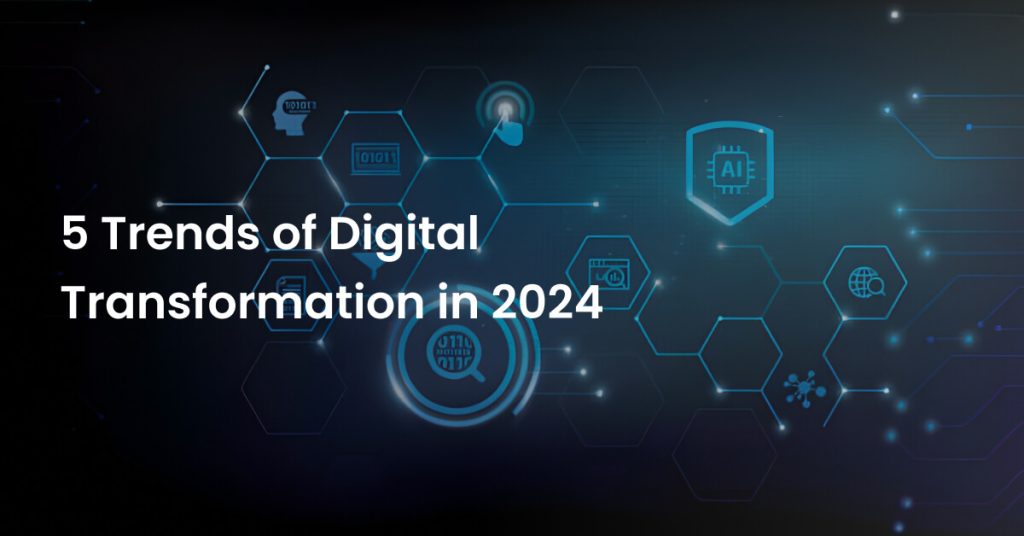
The business environment is grappling with too many technological similarities. We are here to clarify one such similarity between Business Process Management (BPM) and Workflow management. Are you wondering why suddenly such a clarification is needed? Well, it is high time to address the confusion so that organizations can benefit from either of them, which is likely a savior for businesses.
- To invest in the demanding digital transformation technology
- To innovate solutions or products that are well-received by customers
- To align organizational goals and business objectives accordingly
- To allocate resources, hire specialists, and stay updated
Digital transformation is not definitely a one time investment; it is more like a journey that helps organizations stay ahead of the curve, meet customer demands, and establish a strong foothold in the industry. As digital trends keep evolving, exciting opportunities are built, making organizations look ahead of their potential and capabilities. Getting hold of the right trend seems challenging in an era when business requirements keep changing and technological evolution is happening in minutes. To ensure your business invests in the right technology, make sure it answers the following.
- Will the trend help address current problems?
- Will it help find opportunities that assist in streamlining business operations?
- Can the trend be integrated seamlessly into existing digital initiatives?
- Can they help decision-makers and executives drive business insights?
- Will they help in improving employee productivity?
If you are still struggling to find the right solution, it is high time your business needs a digital transformation consulting service that will guide you through the latest technology trends, its practices and methodology, and its benefits for your business. In this blog, you will learn about the 5 latest digital transformation trends that can help your business thrive in the agile digital world.
1. What’s Next in Artificial Intelligence?
2023 marked the year for one of the most groundbreaking transformations organizations were not prepared for. That’s nothing other than artificial intelligence. Designed and programmed to think like a human and solve challenges like a robot, the integration of AI over the course of a year is nothing short of a great investment and innovation for organizations. With AI to offer more for businesses, the digital trend has taken strides to redefine digital transformation with generative artificial intelligence (Gen AI).
Being a subset of AI, Gen AI has made leaps in artificial intelligence with its ability to handle a wide range of data from various domains and service areas. The integration of Gen AI in businesses has seen rapid growth, mainly due to its multi-modal understanding of data and ability to generate information either in text, video, or images. Platforms like ChatGPT, Gemini, and others have significantly deployed Gen AI for its potential in contextual awareness, proactive problem solving, and collaborative learning. Here’s a small example of how Gen AI can elevate your business operations if you start working on its implementation right after reading this article.
Consider this Scenario: Your company deals with sensitive customer data, but using it to improve the user experience would violate privacy laws. Enter Gen AI: its expertise lies in anonymizing data and creating sample datasets for analysis. This unique capability positions Gen AI as the most anticipated trend of 2024, poised to reshape industries for years to come.
Investing early in GenAI can help your organization unlock invaluable insights while ensuring compliance with data privacy regulations. Still confused? Get in touch with a digital transformation consulting company now!
2. Cloud Cost Optimization for your Cloud Spend
Hosting applications from on-premises to the cloud has led to business expansion on a large scale. The pay-as-you-go model has pulled organizations toward utilizing cloud storage, enabling its application to no longer be an optional choice but rather a mandatory one. It can be rightly said that shifting to the cloud was a real digital transformation that organizations went through in the early years of its introduction. Opting for cloud solutions was empowered due to the scaling capacity and low cost.
But have you ever wondered how much spending goes into cloud solutions? That’s where cloud cost optimization comes into play. From accessing your current cloud usage to recommending the right resource allocation, the cloud cost optimization trend is what your business might be in need of in 2024. No doubt, the cloud is for every organization looking for unprecedented scalability and flexibility in utilizing resources for storage. But there should be continuous checks on
- Your organization’s usage pattern and growing demands
- Your organization’s unused cloud resources
- Your organization’s yearly spending on cloud computing
- Your organization’s selection of cloud computing
This kind of business process management is what organizations are looking forward to in the future. The one that clearly monitors bottlenecks, suggests areas for improvement, and tracks performance. The cultural shift is not only to reduce expenses but also to streamline business operations and forecast solutions that elevate organizational goals and objectives. Embracing cloud cost optimization can help your organization gain control over its spending and also offer robust visibility to areas that may need alternate solutions or product integration.
Choosing digital transformation may seem easy and straightforward. But to understand the nuances and intricacies of each solution, consulting digital transformation companies will help you gain more insight into the trend and its benefits for your organization.
3. Adopting Sustainability is the New Normal
Gartner’s prediction on sustainable technology suggests that by 2027, 25% of the CIO’s compensation will be directly tied to their ability to implement and leverage technology solutions that contribute positively to environmental sustainability, social responsibility, and ethical business practices. This emphasizes the strong marching of organizational shifts towards a digital transformation era where businesses prioritize Environmental Social and Corporate Governance (ESG) goals via energy-efficient infrastructure, green data centers, or eco-friendly software solutions that exhibit outcomes with reduced carbon footprints, resource conservation, and social impact. But how?
- Integrating AI solutions helps predict business outcomes and their impact on climate change.
- Implementing big data management, where data from diverse sources is stored, processed, and analyzed for actionable insights on sustainability.
- Choosing cloud computing can reduce reliance on on-premise IT infrastructure. Investing in automation processes facilitates reducing energy consumption for monotonous tasks and business processes.
- Opting for enterprise management solutions like document management systems helps reduce paper usage, leading to more streamlined business operations.
While the above digital transformation seems like a reliable and seamless process, ESG goals cannot be obtained with just one click. It is a framework of solutions that require the assistance of digital transformation companies that are well-versed in sustainable practices, the follow-up procedure, and the outcome. Maintaining high standards of policy is what will help businesses step up toward ESG goals. Getting help from digital transformation consulting services can help your organization step up in the game of sustainability and digital transformation solutions.
4. Why Only Automation and Not Hyper Automation?
If your organization could complete a weekly task in a couple of days, would you opt to use the technology? Then why haven’t you still implemented hyper automation? Yes, the emerging approach to automation is one where artificial intelligence, robotic process automation, and other technologies combine to automate tasks, streamline processes, and scale productivity. With its market growth projected to reach 1.04 trillion dollars by 2026, it is high time your business utilized this digital transformation trend, where you can
- Automate tasks that are less resource intensive
- Eliminate errors, boosting significant savings
- Speed innovation, achieving rapid time-to-market
- Offer personalized services, empowering customer satisfaction
In the digital age, tackling business challenges seems easy when compared to integrating new technologies into the organization. Any new approach to business operations needs a clear understanding of what and how they work. With hyper automation, a synergy of multiple technologies, it is quite tedious for businesses to integrate and implement. Therefore, seeking aid from digital transformation companies seems like a possible solution, where you get to learn the nooks and crannies of the technology and the process behind it. With digital transformation being a framework of processes, make sure your business trails through the journey of transformation with a consultative approach that facilitates success in the long run.
5. Rise of AI in Low Code
The emergence of low-code platforms represents a significant advancement in digital transformation, enabling organizations to empower citizen developers and newcomers to create applications effortlessly through intuitive drag-and-drop interfaces. These platforms have revolutionized application development and design by providing visual modeling capabilities, dramatically reducing time-to-market, and keeping organizations competitive. With the integration of AI, low-code platforms offer even greater benefits for businesses, making investing in them more advantageous than ever.
For instance, Mendix, a leader in low-code platforms, recently added an AI-powered chatbot feature to its 10.6 version. This integration enables organizations to fully leverage Mendix’s AI-driven conversational support while also allowing AI-assisted virtual bots to develop applications that adhere to Mendix’s best practices. The addition of AI has significantly enriched the capabilities of low-code platforms, offering users enhanced functionalities and streamlined processes. Harnessing the potential of an existing tool with the influence of AI is akin to having a knowledgeable guide who can navigate you through an entire city in a single day.
Embracing low-code AI with the help of a digital transformation company that is already a partner with Mendix can help you explore the product more and elevate your organization to new heights of efficiency and innovation.
Conclusion
According to Statista’s forecast, spending on digital transformation is expected to hit 3.4 trillion U.S. dollars by 2026. This highlights how every organization is striving to find top-notch digital solutions for their business. Digital transformation isn’t just about following trends; it’s also about choosing the right provider, technology and achieving desired outcomes. Companies like SquareOne have been assisting organizations with their digital transformation efforts for years, teaming up with partners like Mendix, Microsoft, Hyland, and More4Apps across various business sectors. Together, they’ve made it easier for organizations to overcome major challenges.
Get started with the right digital transformation solutions for your organization based on the trend with SquareOne Technologies, stay ahead of the curve, and achieve success in digital transformation.
















